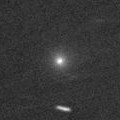
|
New bright comet. Now it is 9.7 mag (July 30, Michael Jager). It locates extremely low in the northern sky in the Northern Hemisphere. It is not observable in the Southern Hemisphere. It will be unobservable soon also in the Northern Hemisphere. Then it will not be observable until December when it becomes fainter than 15 mag.
Date(TT) R.A. (2000) Decl. Delta r Elong. m1 Best Time(A, h)
Aug. 7 8 18.26 30 53.1 1.703 0.805 18 9.2 3:38 (231, 0)
Aug. 14 9 4.23 29 7.3 1.718 0.797 16 9.2 3:46 (231, -3)
|
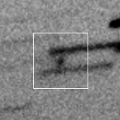
|
Now it is 11.7 mag (Aug. 4, Ken-ichi Kadota). Brightening very rapidly. It will brighten up to 8.5 mag from September to October. But the condition is bad in this apparition. In the Northern Hemisphere, it is observable only in the extremely low sky until August. In the Southern Hemisphere, it will be observable after late August. But it stays locating low for a while.
Date(TT) R.A. (2000) Decl. Delta r Elong. m1 Best Time(A, h)
Aug. 7 7 35.25 20 50.0 1.941 1.074 22 10.3 3:38 (245, 1)
Aug. 14 7 57.96 16 1.6 1.899 1.047 23 9.8 3:46 (251, 1)
|
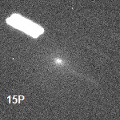
|
It brightened very rapidly. Now it is very bright as 10.7 mag (July 20, Osamu Miyazaki). It stays 10 mag until August. It stays observable in the morning sky for a long time.
Date(TT) R.A. (2000) Decl. Delta r Elong. m1 Best Time(A, h)
Aug. 7 5 24.55 24 56.8 1.299 1.054 52 9.9 3:38 (258, 29)
Aug. 14 5 51.16 25 53.2 1.338 1.092 53 10.1 3:46 (258, 31)
|

|
Now it is very bright as 10.6 mag (Aug. 6, Chris Wyatt). It stays observable at 10 mag in good condition for a long time from spring to summer.
Date(TT) R.A. (2000) Decl. Delta r Elong. m1 Best Time(A, h)
Aug. 7 14 35.73 -6 16.2 1.921 2.080 84 10.5 20:32 ( 55, 31)
Aug. 14 14 46.73 -9 2.5 1.999 2.094 80 10.6 20:22 ( 54, 28)
|
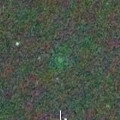
|
It brightened up to 4 mag in major outburst in 2016. Now it is very bright as 10.5 mag (Aug. 8, Rob Kaufman). In the Southern Hemisphere, it stays locating low in the evening sky until October. In the Northern Hemisphere, it stays locating extremely low.
Date(TT) R.A. (2000) Decl. Delta r Elong. m1 Best Time(A, h)
Aug. 7 11 32.65 4 57.5 1.681 1.070 37 10.6 20:32 ( 94, 2)
Aug. 14 12 2.80 2 39.3 1.702 1.107 38 10.7 20:22 ( 90, 4)
|

|
Now it is 11.1 mag (Aug. 6, Carlos Labordena). It will brighten up to 10 mag from summer to autumn, and it will be observable in excellent condition.
Date(TT) R.A. (2000) Decl. Delta r Elong. m1 Best Time(A, h)
Aug. 7 3 40.57 18 26.0 1.548 1.653 77 11.0 3:38 (280, 47)
Aug. 14 4 0.34 18 47.5 1.491 1.640 79 10.9 3:46 (283, 50)
|

|
Now it is 11.5 mag (Aug. 1, Ken-ichi Kadota). It will brighten up to 10 mag in winter in 2022. In the Northern Hemisphere, it stays observable in good condition for a long time. In the Southern Hemisphere, it is not observable until November.
Date(TT) R.A. (2000) Decl. Delta r Elong. m1 Best Time(A, h)
Aug. 7 6 19.74 47 18.0 4.456 3.825 46 11.9 3:38 (230, 28)
Aug. 14 6 30.80 46 49.8 4.374 3.802 49 11.8 3:46 (232, 32)
|

|
Now it is very bright as 11.6 mag (Aug. 6, Chris Wyatt). It stays bright as 10-12 mag until August. In the Southern Hemisphere, it stays observable in excellent condition for a long time. In the Northern Hemisphere, it becomes extremely low after this.
Date(TT) R.A. (2000) Decl. Delta r Elong. m1 Best Time(A, h)
Aug. 7 0 7.23 -48 49.7 0.629 1.506 131 12.0 3:06 ( 0, 6)
Aug. 14 0 4.16 -50 27.6 0.674 1.553 132 12.3 2:35 ( 0, 5)
|
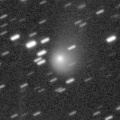
|
Now it is 13.1 mag (Aug. 6, Chris Wyatt). It is expected to be observable at 5-6 mag for a long time from 2022 to 2023. In the Northern Hemisphere, it is not observable at the high light from 2022 summer to 2023 summer. In the Southern Hemisphere, it stays extremely low for a while. But it will be observable in good condition at the high light.
Date(TT) R.A. (2000) Decl. Delta r Elong. m1 Best Time(A, h)
Aug. 7 17 5.36 37 32.6 5.382 5.673 101 12.2 20:32 (113, 83)
Aug. 14 17 2.11 36 14.5 5.377 5.614 98 12.1 20:22 (100, 79)
|

|
Now it is 13.8 mag (Aug. 3, Hirohisa Sato). It will brighten up to 9 mag, and will be observable in good condition in winter.
Date(TT) R.A. (2000) Decl. Delta r Elong. m1 Best Time(A, h)
Aug. 7 1 51.48 6 40.5 0.991 1.603 106 13.4 3:38 (326, 57)
Aug. 14 2 9.69 8 23.4 0.904 1.552 107 13.0 3:46 (332, 61)
|
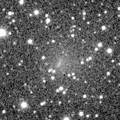
|
Now it is 13.4 mag (July 29, Thomas Lehmann). It will brighten very rapidly, and it will be observable at 10 mag in good condition from October to December. In the Northern Hemisphere, it locates somewhat low at the high light.
Date(TT) R.A. (2000) Decl. Delta r Elong. m1 Best Time(A, h)
Aug. 7 16 23.88 -0 23.1 0.748 1.437 108 13.9 20:32 ( 29, 51)
Aug. 14 16 33.51 -4 10.2 0.752 1.413 105 13.5 20:22 ( 29, 46)
|
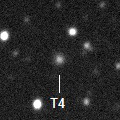
|
Now it is 14.6 mag (July 12, Chris Wyatt). It is expected to brighten up to 11.5 mag in 2022. In the Southern Hemisphere, it stas observable in good condition for a long time, although it becomes extremely low temporarily from August to September. In the Northern Hemisphere, it is not observable until November.
Date(TT) R.A. (2000) Decl. Delta r Elong. m1 Best Time(A, h)
Aug. 7 9 40.67 -22 15.0 5.672 4.933 39 13.7 20:32 ( 86,-36)
Aug. 14 9 48.54 -22 18.1 5.677 4.905 36 13.7 20:22 ( 87,-38)
|
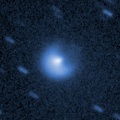
|
Now it is faint as 16.1 mag (July 22, J. Drummond).
Date(TT) R.A. (2000) Decl. Delta r Elong. m1 Best Time(A, h)
Aug. 7 4 39.05 30 23.5 6.305 5.902 62 13.8 3:38 (257, 40)
Aug. 14 4 43.12 30 37.0 6.208 5.904 68 13.7 3:46 (260, 46)
|
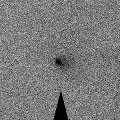
|
It brightened up to 10.1 mag in spring (Apr. 10, Marco Goiato). Now it is fading. It has already faded down to 13.6 mag (July 16, Ken-ichi Kadota). It stays observable in good condition for a long time after this while the comet will fading.
Date(TT) R.A. (2000) Decl. Delta r Elong. m1 Best Time(A, h)
Aug. 7 4 8.41 8 58.6 1.994 1.955 72 13.9 3:38 (286, 36)
Aug. 14 4 18.65 9 1.9 1.964 1.998 77 14.1 3:46 (290, 41)
|

|
Now it is 13.6 mag (July 16, Ken-ichi Kadota). It stays 13-14 mag from 2020 to 2021. It will be observable in good condition after this in the Southern Hemisphere. It locates somewhat low in the Northern Hemisphere.
Date(TT) R.A. (2000) Decl. Delta r Elong. m1 Best Time(A, h)
Aug. 7 18 46.70 -35 21.7 2.122 2.998 143 14.0 21:42 ( 0, 20)
Aug. 14 18 44.47 -35 31.2 2.191 3.009 136 14.1 21:13 ( 0, 19)
|
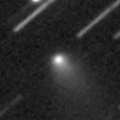
|
Now it is 14.0 mag (Aug. 3, Hirohisa Sato). It will brighten up to 14 mag in summer, and it will be observable in excellent condition. It locates somewhat low in the Southern Hemisphere.
Date(TT) R.A. (2000) Decl. Delta r Elong. m1 Best Time(A, h)
Aug. 7 17 52.06 31 53.6 1.777 2.361 112 14.2 20:46 ( 0, 87)
Aug. 14 17 26.89 30 39.7 1.861 2.344 105 14.2 20:22 ( 55, 83)
|

|
Now it is bright as 13.2 mag (Aug. 6, Chris Wyatt). It stays 13 mag until early summer. In the Southern Hemisphere, it stays observable in good condition for a long time. It locates somewhat low in the Northern Hemisphere.
Date(TT) R.A. (2000) Decl. Delta r Elong. m1 Best Time(A, h)
Aug. 7 13 41.06 -6 43.8 3.699 3.511 71 14.2 20:32 ( 65, 21)
Aug. 14 13 41.04 -5 59.3 3.845 3.530 64 14.3 20:22 ( 69, 18)
|
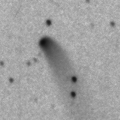
|
Now it is 14.4 mag (July 31, Thomas Lehmann). It stays 14-15 mag until the end of 2021. In the Southern Hemisphere, it stays observable in good condition for a long time. It locates low in the Northern Hemisphere.
Date(TT) R.A. (2000) Decl. Delta r Elong. m1 Best Time(A, h)
Aug. 7 23 25.32 -33 54.5 3.604 4.469 144 14.6 2:24 ( 0, 21)
Aug. 14 23 19.49 -33 42.6 3.582 4.484 149 14.6 1:51 ( 0, 21)
|
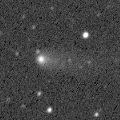
|
Now it is 14.9 mag (Aug. 6, Chris Wyatt). It was expected to brighten up to 13 mag from spring to summer. But actually, it is fainter than originally expected. It stays 14-15 mag until early autumn. In the Southern Hemisphere, it stays observable in good condition for a long time. In the Northern Hemisphere, it is not observable until July in 2022.
Date(TT) R.A. (2000) Decl. Delta r Elong. m1 Best Time(A, h)
Aug. 7 23 7.03 -87 44.2 3.168 3.619 108 14.7 2:11 ( 0,-33)
Aug. 14 22 9.14 -87 36.2 3.202 3.627 106 14.8 0:48 ( 0,-33)
|

|
Now it is 14.8 mag (Aug. 6, Hirohisa Sato). It stays at 14-15 mag for a long time from 2021 to 2022. It stays observable in good condition after this while brightening gradually.
Date(TT) R.A. (2000) Decl. Delta r Elong. m1 Best Time(A, h)
Aug. 7 16 32.12 -10 45.7 4.553 5.039 113 14.8 20:32 ( 21, 42)
Aug. 14 16 28.29 -11 46.8 4.660 5.032 105 14.9 20:22 ( 27, 39)
|
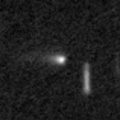
|
Now it is 16.2 mag (July 30, Thomas Lehmann). It will approach to Earth down to 0.2 a.u. in December, and it is expected to brighten up to 4 mag. In the Northern Hemisphere, it stays observable in good condition for a long time until December while the comet is brightening gradually. In the Southern Hemisphere, it is not observable until mid December.
Date(TT) R.A. (2000) Decl. Delta r Elong. m1 Best Time(A, h)
Aug. 7 10 38.54 45 9.0 3.392 2.619 34 15.3 20:32 (135, 15)
Aug. 14 10 42.45 44 3.0 3.315 2.526 32 15.1 20:22 (135, 13)
|

|
Now it is 15.6 mag (July 16, Ken-ichi Kadota). It stays 15 mag from summer to autumn. In the Northern Hemisphere, it stays observable in good condition for a long time. In the Southern Hemisphere, it will be getting lower gradually after this.
Date(TT) R.A. (2000) Decl. Delta r Elong. m1 Best Time(A, h)
Aug. 7 4 43.18 18 2.0 1.704 1.534 62 15.3 3:38 (271, 34)
Aug. 14 5 3.45 19 53.1 1.663 1.529 64 15.2 3:46 (271, 38)
|
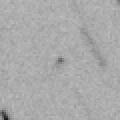
|
Now it is 17.0 mag (Aug. 4, Slooh.com Chile Observatory, La Dehesa). It will brighten rapidly up to 9 mag in winter. It will be observable in good condition.
Date(TT) R.A. (2000) Decl. Delta r Elong. m1 Best Time(A, h)
Aug. 7 0 17.70 -49 1.6 1.539 2.322 129 15.6 3:16 ( 0, 6)
Aug. 14 0 18.34 -51 2.5 1.474 2.269 130 15.2 2:49 ( 0, 4)
|
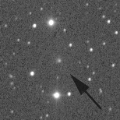
|
It brightened up to 14.2 mag in early summer (June 10, Thomas Lehmann). Now it is not observable. It will be fading after this. In the Northern Hemisphere, it will appear in the morning sky at 16 mag in October. In the Southern Hemisphere, it will never be observable again.
Date(TT) R.A. (2000) Decl. Delta r Elong. m1 Best Time(A, h)
Aug. 7 10 10.64 16 29.5 2.949 1.987 15 15.3 20:32 (116, -7)
Aug. 14 10 24.61 17 35.7 2.978 2.001 12 15.4 20:22 (117, -7)
|

|
It will brighten up to 14.5 mag from spring to summer. In the Southern Hemisphere, it stays observable in excellent condition for a long time. In the Northern Hemisphere, it is not observable after this.
Date(TT) R.A. (2000) Decl. Delta r Elong. m1 Best Time(A, h)
Aug. 7 9 37.47 -58 55.7 2.951 2.873 75 15.4 20:32 ( 39,-44)
Aug. 14 9 56.29 -57 25.3 3.050 2.902 72 15.5 20:22 ( 41,-44)
|
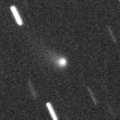
|
Now it is 15.4 mag (July 17, Thomas Lehmann). In the Northern Hemisphere, it stays observable at 15-16 mag for a long time from spring to early 2022. In the Southern Hemisphere, it is not observable until the end of 2021.
Date(TT) R.A. (2000) Decl. Delta r Elong. m1 Best Time(A, h)
Aug. 7 12 25.41 48 7.9 3.538 3.007 51 15.4 20:32 (129, 33)
Aug. 14 12 27.98 45 20.0 3.590 3.005 47 15.4 20:22 (127, 30)
|

|
Now it is 15.8 mag (July 30, Thomas Lehmann). It will brighten up to 13 mag in 2022. In 2021, it is observable at 14-15 mag in good condition.
Date(TT) R.A. (2000) Decl. Delta r Elong. m1 Best Time(A, h)
Aug. 7 13 25.94 -5 53.4 3.687 3.433 67 15.5 20:32 ( 68, 18)
Aug. 14 13 32.11 -6 44.0 3.763 3.419 62 15.5 20:22 ( 70, 16)
|
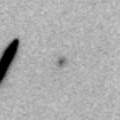
|
Now it is 15.5 mag (July 27, Ken-ichi Kadota). It will brighten rapidly up to 15 mag in autumn. It will be observable in excellent condition in the Northern Hemisphere. It locates somewhat low in the Southern Hemisphere.
Date(TT) R.A. (2000) Decl. Delta r Elong. m1 Best Time(A, h)
Aug. 7 3 59.46 15 36.4 1.675 1.694 73 15.8 3:38 (280, 42)
Aug. 14 4 17.32 17 1.9 1.615 1.682 75 15.7 3:46 (282, 46)
|

|
It brightened up to 11.6 mag in winter (Feb. 18, Thomas Lehmann). Now it is fading. It has already faded down to 15.6 mag (July 29, Thomas Lehmann). In the Southern Hemisphere, it stays observable in good condition after this. In the Northern Hemisphere, it will never be observable after this.
Date(TT) R.A. (2000) Decl. Delta r Elong. m1 Best Time(A, h)
Aug. 7 5 32.96 -57 55.5 3.359 3.449 86 15.7 3:38 (327,-21)
Aug. 14 5 32.34 -59 18.9 3.394 3.514 88 15.8 3:46 (331,-18)
|

|
Now it is 16.3 mag (July 25, J. L. Virlichie, P. Traverse, H. Roy, J. P. Desgrees). It is expected to brighten up to 13 mag in 2022. In the Southern Hemisphere, it stays observable in good condition for a long time. In the Northern Hemisphere, it is not observable for a while.
Date(TT) R.A. (2000) Decl. Delta r Elong. m1 Best Time(A, h)
Aug. 7 12 1.55 -22 24.5 4.765 4.309 57 15.7 20:32 ( 68, -8)
Aug. 14 12 2.98 -22 59.6 4.811 4.266 52 15.7 20:22 ( 69,-11)
|

|
Now it is 15.7 mag (July 17, Toshiyuki Takahashi). It stays observable at 15-16 mag in good condition until autumn.
Date(TT) R.A. (2000) Decl. Delta r Elong. m1 Best Time(A, h)
Aug. 7 16 30.21 -13 49.3 4.373 4.865 113 15.7 20:32 ( 21, 39)
Aug. 14 16 29.73 -13 2.8 4.479 4.864 106 15.8 20:22 ( 26, 38)
|
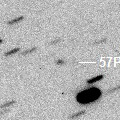
|
Now it is 16.7 mag (July 17, Ken-ichi Kadota). It will brighten up to 15.5 mag from summer to autumn. It stays observable for a long time.
Date(TT) R.A. (2000) Decl. Delta r Elong. m1 Best Time(A, h)
Aug. 7 15 32.86 -15 16.4 1.367 1.841 100 15.8 20:32 ( 35, 32)
Aug. 14 15 42.92 -15 58.3 1.409 1.819 95 15.8 20:22 ( 37, 30)
|
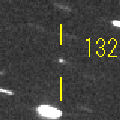
|
Now it is 17.2 mag (Aug. 5, F. Kugel, J.-G. Bosch). It will brighten very rapidly up to 14 mag, and it will be observable in excellent condition in autumn.
Date(TT) R.A. (2000) Decl. Delta r Elong. m1 Best Time(A, h)
Aug. 7 0 10.35 3 30.5 1.122 1.942 130 16.2 3:09 ( 0, 59)
Aug. 14 0 15.44 3 38.3 1.047 1.911 136 15.8 2:46 ( 0, 59)
|
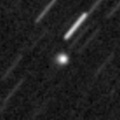
|
Now it is 16.1 mag (Aug. 2, ATLAS-HKO, Haleakala). It is expected to brighten up to 11 mag in 2023. In the Northern Hemisphere, it stays observable in good condition for a long time. It locates extremely low in the Southern Hemisphere.
Date(TT) R.A. (2000) Decl. Delta r Elong. m1 Best Time(A, h)
Aug. 7 16 22.59 46 22.8 6.167 6.256 90 15.9 20:32 (134, 72)
Aug. 14 16 17.67 45 18.0 6.179 6.212 87 15.9 20:22 (126, 69)
|
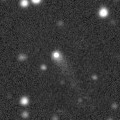
|
Now it is 16.0 mag (July 18, Ken-ichi Kadota). It stays observable at 16 mag from 2021 to 2022.
Date(TT) R.A. (2000) Decl. Delta r Elong. m1 Best Time(A, h)
Aug. 7 13 46.71 1 50.1 4.971 4.723 70 16.1 20:32 ( 71, 27)
Aug. 14 13 50.06 2 10.4 5.069 4.718 64 16.1 20:22 ( 74, 25)
|

|
Now it is 16.1 mag (July 26, J. L. Virlichie, P. Traverse, H. Roy, J. P. Desgrees). It will brighten up to 12.5 mag in 2022 summer. In the Southern Hemisphere, it stays observable in excellent condition for a long time. In the Northern Hemisphere, it is not observable until August in 2022.
Date(TT) R.A. (2000) Decl. Delta r Elong. m1 Best Time(A, h)
Aug. 7 4 0.67 -54 50.0 4.633 4.846 96 16.2 3:38 (333, -9)
Aug. 14 4 1.73 -56 51.5 4.544 4.797 98 16.1 3:46 (338, -8)
|
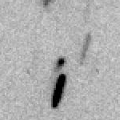
|
Now it is 15.8 mag (Aug. 3, Ken-ichi Kadota). It stays observable at 16 mag in good condition until autumn.
Date(TT) R.A. (2000) Decl. Delta r Elong. m1 Best Time(A, h)
Aug. 7 23 23.72 -7 41.2 1.401 2.310 145 16.2 2:22 ( 0, 47)
Aug. 14 23 23.13 -8 43.3 1.357 2.305 152 16.1 1:54 ( 0, 46)
|

|
Now it is 16.6 mag (July 18, Thomas Lehmann). It is observable at 16 mag from 2020 to 2021. It locates low in the Southern Hemisphere.
Date(TT) R.A. (2000) Decl. Delta r Elong. m1 Best Time(A, h)
Aug. 7 22 39.35 44 16.0 5.539 6.049 115 16.3 1:38 (180, 81)
Aug. 14 22 32.04 43 38.5 5.482 6.058 120 16.3 1:04 (180, 81)
|

|
Now it is 16.0 mag (July 20, Thomas Lehmann). In the Northern Hemisphere, it stays observable for a long time while it is getting fainter slowly. In the Southern Hemisphere, it will never be observable again.
Date(TT) R.A. (2000) Decl. Delta r Elong. m1 Best Time(A, h)
Aug. 7 13 34.02 52 33.5 6.853 6.453 62 16.3 20:32 (132, 44)
Aug. 14 13 36.48 51 19.0 6.939 6.501 60 16.3 20:22 (130, 42)
|
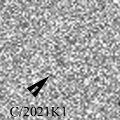
|
Now it is 15.9 mag (Aug. 2, ATLAS-MLO, Mauna Loa). It will be fading after this, and it will be fainter than 18 mag in November.
Date(TT) R.A. (2000) Decl. Delta r Elong. m1 Best Time(A, h)
Aug. 7 1 10.03 -5 46.0 2.007 2.660 119 16.3 3:38 (349, 49)
Aug. 14 1 13.26 -6 33.3 1.964 2.684 125 16.4 3:44 ( 0, 49)
|

|
Announced as a bright Centaur-type asteroid. But Hidetaka Sato revealed that this is Phoebe, one of the satellites of Saturn.
Date(TT) R.A. (2000) Decl. Delta r Elong. m1 Best Time(A, h)
Aug. 7 20 50.66 -18 30.4 8.862 9.874 175 16.4 23:46 ( 0, 37)
Aug. 14 20 48.72 -18 38.9 8.881 9.875 168 16.5 23:16 ( 0, 36)
|

|
Now it is 16.1 mag (July 20, E. Bryssinck). It stays at 16-17 mag from 2020 to 2021. In the Northern Hemisphere, it stays observable in good condition for a long time. It locates extremely low in the Southern Hemisphere.
Date(TT) R.A. (2000) Decl. Delta r Elong. m1 Best Time(A, h)
Aug. 7 18 42.77 51 40.1 8.548 8.863 104 16.4 21:37 (180, 73)
Aug. 14 18 37.94 51 31.6 8.572 8.867 103 16.5 21:05 (180, 73)
|
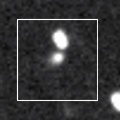
|
Now it is 16.6 mag (July 29, Thomas Lehmann). It is expected to brighten up to 10 mag in 2023. In the Northern Hemisphere, it stays observable in good condition until 2023 autumn. In the Southern Hemipshere, it stays unobservable until 2023 summer.
Date(TT) R.A. (2000) Decl. Delta r Elong. m1 Best Time(A, h)
Aug. 7 12 5.23 35 38.2 7.346 6.651 43 16.6 20:32 (117, 25)
Aug. 14 12 7.31 35 17.4 7.339 6.597 40 16.5 20:22 (119, 22)
|
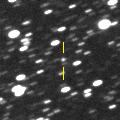
|
Now it is 16.8 mag (July 29, Thomas Lehmann). It is expected to brighten up to 11 mag from spring to summer in 2022. In the Southen Hemisphere, it locates somewhat low in 2021, but it will be observable in good condition at the high light for a long time. In the Northern Hemisphere, it is observable in good condition in 2021, but it will not be observable at the high light.
Date(TT) R.A. (2000) Decl. Delta r Elong. m1 Best Time(A, h)
Aug. 7 19 30.15 33 54.7 3.341 4.004 124 16.6 22:24 ( 0, 89)
Aug. 14 19 19.93 32 11.7 3.291 3.940 123 16.5 21:47 ( 0, 87)
|

|
Now it is 16.5 mag (July 18, Thomas Lehmann). Fading slowly. In the Northern Hemisphere, it stays observable in good condition for a long time. It is not observable after this in the Southern Hemisphere.
Date(TT) R.A. (2000) Decl. Delta r Elong. m1 Best Time(A, h)
Aug. 7 16 34.96 55 48.7 5.510 5.568 88 16.6 20:32 (158, 67)
Aug. 14 16 28.37 55 2.6 5.584 5.601 85 16.6 20:22 (150, 65)
|

|
It brightened up to 3 mag in December in the SOHO spacecraft images (Dec. 18, Hirohisa Sato). Now it is 16.2 mag (July 22, ATLAS-MLO, Mauna Loa). It stays observable in good condition after this while the comet will be fading.
Date(TT) R.A. (2000) Decl. Delta r Elong. m1 Best Time(A, h)
Aug. 7 0 8.99 20 4.6 3.209 3.849 122 16.6 3:08 ( 0, 75)
Aug. 14 0 4.00 19 51.0 3.206 3.930 129 16.7 2:35 ( 0, 75)
|

|
Now it is 16.8 mag (July 18, Toshihiko Ikemura, Hirohisa Sato). It is expected to brighten up to 11 mag in 2023. In the Northern Hemisphere, it is observable in good condition in 2021. But it is observable only until November in 2022. In the Southern Hemisphere, it locates extremely low in 2021. But it will be observable in good condition at the high light.
Date(TT) R.A. (2000) Decl. Delta r Elong. m1 Best Time(A, h)
Aug. 7 17 35.74 41 18.8 6.165 6.490 104 16.7 20:32 (179, 84)
Aug. 14 17 32.35 40 8.0 6.157 6.441 101 16.7 20:22 (141, 83)
|
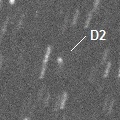
|
Now it is 17.1 mag (Aug. 2, ATLAS-HKO, Haleakala). It will brighten up to 15.5 mag in winter. In the Northern Hemisphere, it stays observable in good condition for a long time. It is not observable at all in the Southern Hemisphere.
Date(TT) R.A. (2000) Decl. Delta r Elong. m1 Best Time(A, h)
Aug. 7 17 41.98 74 18.5 3.410 3.447 83 16.7 20:34 (180, 51)
Aug. 14 17 10.01 73 44.8 3.392 3.413 82 16.7 20:22 (175, 51)
|
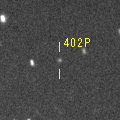
|
First return of a new periodic comet observed at 16 mag from 2003 to 2004. Now it is 16.8 mag (Apr. 11, J. Drummond). It will brighten up to 16 mag in winter, and it will be observable in excellent condition. It will be getting higher gradually.
Date(TT) R.A. (2000) Decl. Delta r Elong. m1 Best Time(A, h)
Aug. 7 5 47.26 2 25.9 4.564 4.007 51 16.8 3:38 (276, 12)
Aug. 14 5 54.35 2 25.5 4.485 4.000 55 16.8 3:46 (280, 18)
|
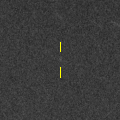
|
Now it is 16.8 mag (July 18, Ken-ichi Kadota). It will brighten up to 16.5 mag in autumn and it will be observable in good condition.
Date(TT) R.A. (2000) Decl. Delta r Elong. m1 Best Time(A, h)
Aug. 7 23 36.67 -2 2.0 1.291 2.172 140 16.9 2:35 ( 0, 53)
Aug. 14 23 34.52 -1 21.1 1.246 2.170 147 16.8 2:06 ( 0, 54)
|

|
Now it is 18.0 mag (Aug. 1, Palomar Mountain--ZTF). Appearing in the morning sky. It will brightens rapidly. And it will be observable at 15 mag in excellent condition in winter.
Date(TT) R.A. (2000) Decl. Delta r Elong. m1 Best Time(A, h)
Aug. 7 6 3.92 28 34.6 3.127 2.496 43 17.0 3:38 (250, 23)
Aug. 14 6 17.91 28 20.2 3.060 2.489 47 16.8 3:46 (253, 27)
|

|
It stays observable at 16 mag from autumn to winter. In the Northern Hemisphere, it stays observable in good condition. In the Southern Hemisphere, it stays extremely low until November.
Date(TT) R.A. (2000) Decl. Delta r Elong. m1 Best Time(A, h)
Aug. 7 7 2.09 29 26.9 2.650 1.863 31 17.0 3:38 (243, 12)
Aug. 14 7 22.63 28 47.4 2.601 1.844 33 16.9 3:46 (245, 15)
|

|
First return of a new periodic comet observed at 17 mag in 2014. It has not been observed yet in this apparition. It is expected to brighten up to 17 mag from summer to autumn, and it will be observable in good condition.
Date(TT) R.A. (2000) Decl. Delta r Elong. m1 Best Time(A, h)
Aug. 7 2 10.02 23 51.8 1.311 1.738 95 17.0 3:38 (293, 68)
Aug. 14 2 20.28 25 27.9 1.274 1.757 99 17.0 3:46 (300, 73)
|
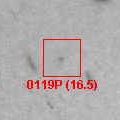
|
Now it is 18.9 mag (Aug. 3, ATLAS-HKO, Haleakala). It will brighten up to 14.5 mag in 2022 winter. In 2021, it stays observable in good condition while the comet will be brightening gradually. It is fainter than this ephemeris recently.
Date(TT) R.A. (2000) Decl. Delta r Elong. m1 Best Time(A, h)
Aug. 7 23 3.09 -14 29.9 2.371 3.301 152 17.2 2:02 ( 0, 41)
Aug. 14 22 59.68 -15 9.4 2.308 3.275 159 17.0 1:31 ( 0, 40)
|

|
It had been observed as 8-9 mag for a long time in 2020. Now it is fading. It has already faded down to 16.8 mag (July 9, Thomas Lehmann). It will be observable in good condition after this in the Southern Hemisphere. It locates extremely low after this in the Northern Hemisphere.
Date(TT) R.A. (2000) Decl. Delta r Elong. m1 Best Time(A, h)
Aug. 7 16 7.86 -45 46.1 4.924 5.389 112 17.1 20:32 ( 15, 7)
Aug. 14 16 7.38 -45 35.6 5.083 5.450 106 17.2 20:22 ( 18, 6)
|

|
Now it is 16.6 mag (July 25, ATLAS-MLO, Mauna Loa). It will be fading after this, and it will be fainter than 18 mag in October.
Date(TT) R.A. (2000) Decl. Delta r Elong. m1 Best Time(A, h)
Aug. 7 15 15.96 -21 23.1 4.883 5.120 97 17.2 20:32 ( 36, 24)
Aug. 14 15 13.07 -21 46.8 5.033 5.144 90 17.3 20:22 ( 40, 22)
|

|
Now it is 16.7 mag (July 18, Toshihiko Ikemura, Hirohisa Sato). In the Northern Hemisphere, it stays observable in good condition after this while the comet will be fading. In the Southern Hemisphere, it stays locating extremely low for a long time.
Date(TT) R.A. (2000) Decl. Delta r Elong. m1 Best Time(A, h)
Aug. 7 4 29.96 33 15.5 2.571 2.314 64 17.2 3:38 (255, 43)
Aug. 14 4 40.80 34 11.9 2.548 2.368 68 17.2 3:46 (256, 48)
|

|
Appearing in the morning sky. Now it is 17.3 mag (Aug. 2, F. Kugel, J.-G. Bosch). In the Northern Hemisphere, it stays observable at 17 mag in good condition until winter. In the Southern Hemisphere, it stays locating extremely low for a while.
Date(TT) R.A. (2000) Decl. Delta r Elong. m1 Best Time(A, h)
Aug. 7 5 50.50 38 0.7 2.444 1.921 48 17.2 3:38 (242, 29)
Aug. 14 6 11.24 37 48.5 2.407 1.926 50 17.2 3:46 (244, 32)
|

|
Now it is 16.5 mag (July 19, Katsumi Yoshimoto). In the Northern Hemisphere, it stays observable in good condition while the comet will be fading. In the Southern Hemipsphere, it stays locating extremely low after this. Thomas Lehmann reported it was bright as 15.3 mag on July 29.
Date(TT) R.A. (2000) Decl. Delta r Elong. m1 Best Time(A, h)
Aug. 7 4 33.78 39 0.9 2.720 2.436 63 17.2 3:38 (247, 44)
Aug. 14 4 46.46 39 55.3 2.674 2.462 67 17.3 3:46 (247, 48)
|

|
It has not been observed yet in this apparition. It will brightens rapidly. And it is expected to be observable at 10-11 mag in good condition from December to February.
Date(TT) R.A. (2000) Decl. Delta r Elong. m1 Best Time(A, h)
Aug. 7 22 47.17 1 32.9 1.202 2.139 149 17.8 1:46 ( 0, 57)
Aug. 14 22 42.92 1 22.0 1.111 2.081 156 17.4 1:14 ( 0, 56)
|
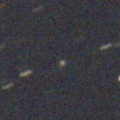
|
Now it is 17.7 mag (July 25, Michael Jager). It stays observable at 17-18 mag for a long time until 2024.
Date(TT) R.A. (2000) Decl. Delta r Elong. m1 Best Time(A, h)
Aug. 7 14 19.89 -5 22.3 9.156 9.039 80 17.4 20:32 ( 59, 29)
Aug. 14 14 19.23 -5 20.2 9.268 9.030 73 17.4 20:22 ( 63, 25)
|
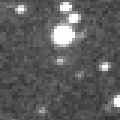
|
Now it is 16.9 mag (July 19, ATLAS-HKO, Haleakala)�$B!#�(BIt stays observable at 17-18 mag for a long time from 2021 to 2022.
Date(TT) R.A. (2000) Decl. Delta r Elong. m1 Best Time(A, h)
Aug. 7 19 9.86 -18 29.4 3.214 4.136 151 17.4 22:05 ( 0, 37)
Aug. 14 19 7.42 -18 35.9 3.261 4.129 144 17.5 21:35 ( 0, 36)
|

|
First return of a new periodic comet which brightened up to 17 mag in 2012. Now it is 18.3 mag (July 10, ATLAS-HKO, Haleakala). In the Southern Hemisphere, it is observable at 17.5 mag in excellent condition in summer. It locates low in the Northern Hemisphere.
Date(TT) R.A. (2000) Decl. Delta r Elong. m1 Best Time(A, h)
Aug. 7 19 40.80 -40 55.4 0.748 1.701 149 17.4 22:36 ( 0, 14)
Aug. 14 19 35.74 -41 22.9 0.730 1.654 142 17.5 22:04 ( 0, 14)
|
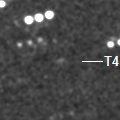
|
Now it is extremely faint as 20.5 mag (June 17, M. Jaeger, E. Prosperi, S. Prosperi). It was predicted to brighten up to 17.5 mag in 2021 summer. But actually, it is much fainter than predicted. It is not observable in the Southern Hemisphere.
Date(TT) R.A. (2000) Decl. Delta r Elong. m1 Best Time(A, h)
Aug. 7 12 39.60 66 51.4 2.536 2.225 60 17.5 20:32 (151, 38)
Aug. 14 13 5.92 62 27.5 2.556 2.240 60 17.5 20:22 (145, 39)
|

|
Now it is 16.4 mag (July 31, ATLAS-HKO, Haleakala). It will be fading slowly.
Date(TT) R.A. (2000) Decl. Delta r Elong. m1 Best Time(A, h)
Aug. 7 17 2.61 -11 16.9 7.345 7.908 120 17.5 20:32 ( 11, 43)
Aug. 14 16 59.66 -11 7.9 7.480 7.935 113 17.6 20:22 ( 18, 42)
|
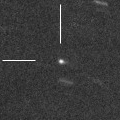
|
Now it is 17.9 mag (July 18, Toshihiko Ikemura, Hirohisa Sato). It is observable at 17 mag in good condition in autumn.
Date(TT) R.A. (2000) Decl. Delta r Elong. m1 Best Time(A, h)
Aug. 7 2 21.21 18 38.8 3.631 3.859 95 17.7 3:38 (299, 62)
Aug. 14 2 24.78 18 47.4 3.528 3.854 101 17.6 3:46 (312, 68)
|
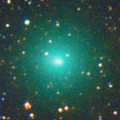
|
It brightened up to 8.2 mag in 2020 autumn (Oct. 13, 2020, Chris Wyatt). Now it is 18.9 mag (July 15, Palomar Mountain--ZTF). It is observable at 18 mag in 2021.
Date(TT) R.A. (2000) Decl. Delta r Elong. m1 Best Time(A, h)
Aug. 7 4 45.99 22 18.4 3.425 3.073 61 17.6 3:38 (266, 35)
Aug. 14 4 52.72 22 34.1 3.371 3.112 66 17.7 3:46 (269, 41)
|

|
First return of a new periodic comet which brightened up to 17 mag in 2006. Now it is 17.4 mag (June 15, Taras Prystavski). It stays 18 mag from 2021 to 2022.
Date(TT) R.A. (2000) Decl. Delta r Elong. m1 Best Time(A, h)
Aug. 7 22 29.69 -69 31.9 2.601 3.295 125 17.8 1:29 ( 0,-14)
Aug. 14 22 19.62 -69 42.8 2.600 3.279 124 17.7 0:52 ( 0,-15)
|
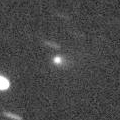
|
First return of a new periodic comet which brightened up to 16 mag in 2014. Now it is 16.9 mag (July 5, Thomas Lehmann). It stays observable at 16-17 mag in good condition until July.
Date(TT) R.A. (2000) Decl. Delta r Elong. m1 Best Time(A, h)
Aug. 7 13 26.79 -12 39.1 2.260 2.144 70 17.7 20:32 ( 63, 14)
Aug. 14 13 38.39 -14 21.1 2.333 2.148 66 17.8 20:22 ( 62, 12)
|

|
It brightened up to 18.5 mag in 2020 spring (Apr. 2, 2020, W. Hasubick). Now it is 19.3 mag (July 16, J. P. Desgrees, J. L. Virlichie, P. Traverse, H. Roy). It has passed the perihelion in 2020 October. At the discovery in 2005, it stayed bright for several years even after the perihelion passage. In this apparition, it may stay observable at 18 mag from 2021 to 2024.
Date(TT) R.A. (2000) Decl. Delta r Elong. m1 Best Time(A, h)
Aug. 7 23 49.81 -25 36.2 2.994 3.837 141 17.8 2:49 ( 0, 30)
Aug. 14 23 47.81 -26 22.3 2.971 3.857 146 17.8 2:19 ( 0, 29)
|

|
Now it is 17.7 mag (July 13, ATLAS-MLO, Mauna Loa). It will brighten up to 16 mag in 2022. In 2021, it stays observable at 18 mag until September.
Date(TT) R.A. (2000) Decl. Delta r Elong. m1 Best Time(A, h)
Aug. 7 13 47.91 -3 38.1 3.376 3.212 72 17.8 20:32 ( 66, 24)
Aug. 14 13 54.48 -4 36.3 3.454 3.202 67 17.8 20:22 ( 67, 21)
|

|
It brightened up to 13.8 mag in autumn in 2019 (Sept. 3, 2019, Chris Wyatt). Now it is fading slowly. It stays 18 mag until autumn.
Date(TT) R.A. (2000) Decl. Delta r Elong. m1 Best Time(A, h)
Aug. 7 0 46.87 21 22.1 7.780 8.249 114 17.9 3:38 (353, 76)
Aug. 14 0 45.04 21 39.1 7.726 8.292 120 17.9 3:16 ( 0, 77)
|
|
![]()
 C/2019 O3 ( Palomar )
C/2019 O3 ( Palomar ) C/2020 V2 ( ZTF )
C/2020 V2 ( ZTF ) C/2021 E3 ( ZTF )
C/2021 E3 ( ZTF ) C/2019 K7 ( Smith )
C/2019 K7 ( Smith ) C/2020 S3 ( Erasmus )
C/2020 S3 ( Erasmus ) C/2020 K1 ( PanSTARRS )
C/2020 K1 ( PanSTARRS ) C/2021 D2 ( ZTF )
C/2021 D2 ( ZTF ) 402P/2020 Q3 ( LINEAR )
402P/2020 Q3 ( LINEAR ) 193P/LINEAR-NEAT
193P/LINEAR-NEAT 110P/Hartley 3
110P/Hartley 3 52P/Harrington-Abell
52P/Harrington-Abell P/2014 W12 ( Gibbs )
P/2014 W12 ( Gibbs ) 119P/Parker-Hartley
119P/Parker-Hartley C/2017 T2 ( PanSTARRS )
C/2017 T2 ( PanSTARRS ) C/2017 Y2 ( PanSTARRS )
C/2017 Y2 ( PanSTARRS ) 28P/Neujmin 1
28P/Neujmin 1 241P/LINEAR
241P/LINEAR 17P/Holmes
17P/Holmes 104P/Kowal 2
104P/Kowal 2 C/2020 F2 ( ATLAS )
C/2020 F2 ( ATLAS ) 395P/2020 H1 ( Catalina-NEAT )
395P/2020 H1 ( Catalina-NEAT ) P/2021 L5 ( La Sagra )
P/2021 L5 ( La Sagra ) C/2020 T4 ( PanSTARRS )
C/2020 T4 ( PanSTARRS ) C/2017 U7 ( PanSTARRS )
C/2017 U7 ( PanSTARRS ) P/2021 N2 ( Fuls )
P/2021 N2 ( Fuls ) 88P/Howell
88P/Howell P/2021 L1 ( Christensen )
P/2021 L1 ( Christensen ) 413P/2020 W4 ( Larson )
413P/2020 W4 ( Larson ) 378P/2019 E2 ( McNaught )
378P/2019 E2 ( McNaught ) 152P/Helin-Lawrence
152P/Helin-Lawrence C/2017 B3 ( LINEAR )
C/2017 B3 ( LINEAR )![]()































































